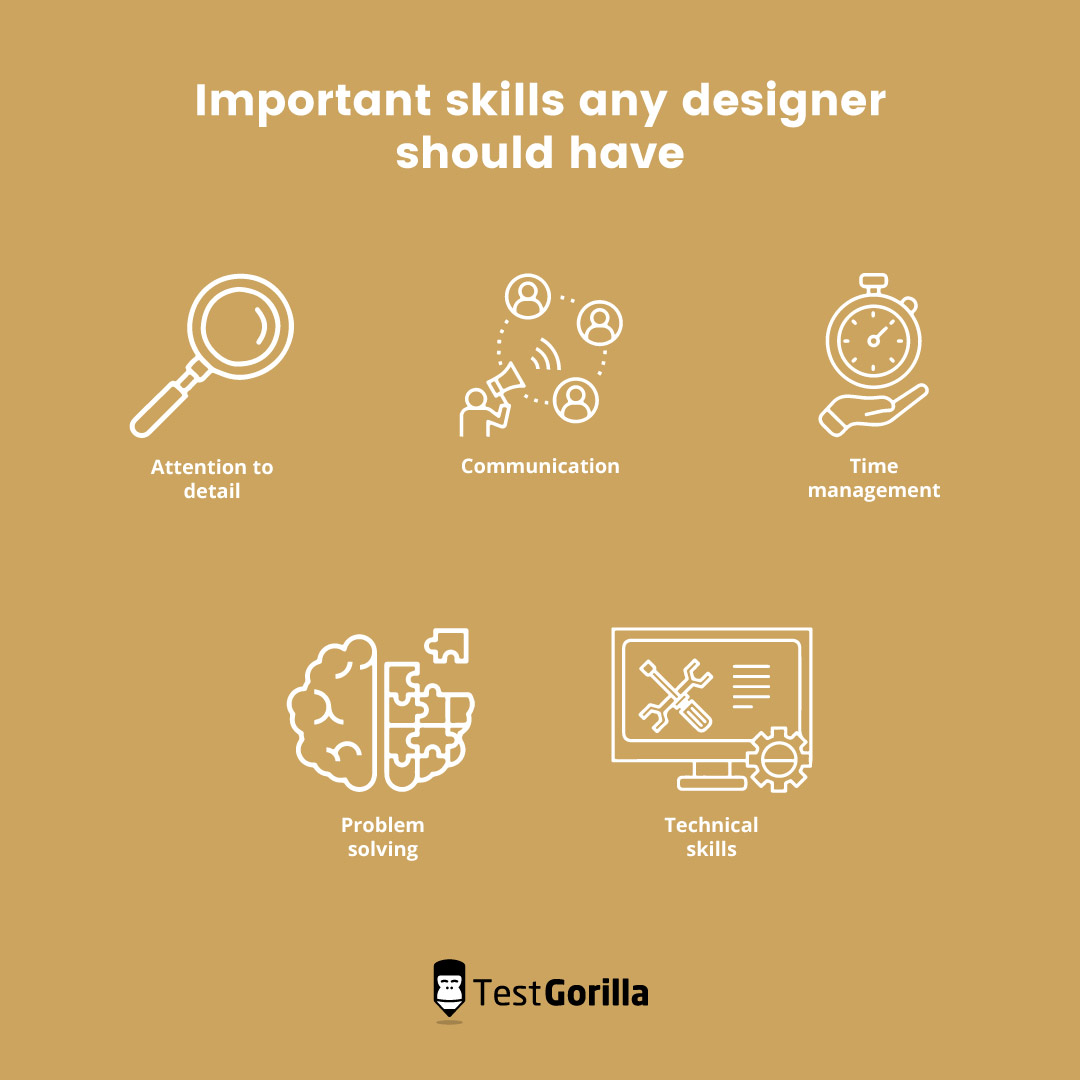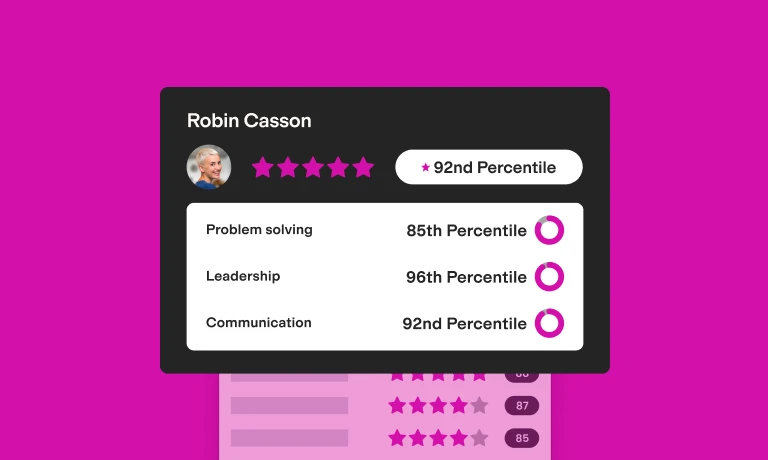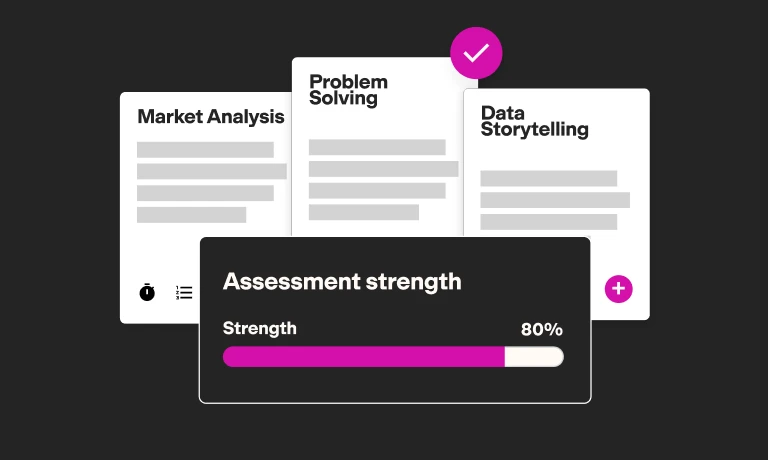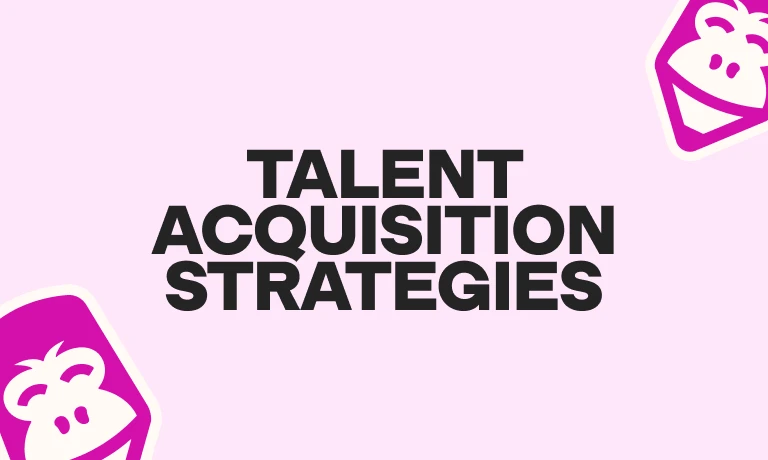The main goal of every business is to sell their products and services.
To do this, they must convey a convincing message through visuals, advertisements, and product designs that speak to their clients and prompt them to buy. While you may have amazing ideas about your product or service, you’ll probably need a designer to bring it to life.
In that way, a designer can make or break your company, so recruiting the right person for the job is your main task as a hiring manager.
Finding the right designer for your company starts with understanding what your company’s needs are, which will determine the type of designer you hire. For instance, do you want to hire a product designer or a UX/UI designer? What about hiring a freelance graphic designer versus a full-time one?”
You’ll also want to hire people with the right knowledge and skills. Great designers will be detail-oriented and have knowledge of designer programs like Figma and Adobe.
This guide will help you determine which type of designer you need and how to hire them. We’ll go over what a designer is and the types of designers to be aware of. Then you’ll learn about the key skills every designer needs to possess and how to test for them using TestGorilla’s pre-employment software.
Finally, you’ll learn where to search for designers, how much it will cost to hire one, and what questions to ask during your interview process to select the best candidate.
What is a designer?
A designer is a professional who uses their creativity and skills to create visually appealing and functional designs for a wide range of products, including fashion, graphics, interiors, and websites.
They are responsible for developing design concepts, choosing appropriate colors, shapes, and typography, and using various tools and software to bring their ideas to life.
Good design will set companies apart from their rivals in the market by creating compelling messages that characterize a business and define the relationship with its customers. The goal is to attract attention to your product or service through convincing visuals.
Designers work in a variety of industries, including advertising, marketing, media, and entertainment. They may specialize in one or more areas, such as branding, user experience (UX) design, or product design.
They often collaborate with other professionals, such as writers, photographers illustrators, and developers, to create cohesive and effective designs that meet the needs of their clients or organizations.
Different types of designers
For most people, when they hear “designer,” they immediately think of a graphic designer.
However, there are many types of designers that you should be aware of. Although they share similarities, their chosen field will determine the specific knowledge and skills they possess.
We’ve compiled a list of the most common types of designers you might be hiring for:
Graphic designer
A graphic designer uses visual elements, such as typography, images, and colors, to create designs that communicate a message or idea.
They work on a variety of projects, including advertisements, websites, logos, brochures, banners, packaging, and more. Most graphic designers will work on marketing products, sales images, and game development visuals.
Web designer
A web designer or web developer is someone who creates website pages for a business or any other organization. They work on the look, layout, and functionality of websites, ensuring that they are both visually appealing and easy to use.
Web designers will often be categorized into front-end and back-end designers.
Front-end web designers ensure the visible part of websites, i.e. the one that’s seen and used by the user, is functional. This means all the buttons, navigation, and internal links work properly and are intuitive for users. Front-end developers typically work on programming languages such as HTML, CSS, and JavaScript, and frameworks such as React, Angular, and Vue.js.
Back-end web designers write the code and create the databases on which the website is built. Back-end developers typically work on programming languages such as PHP, Java, Python, and HTML, and databases such as MySQL and MongoDB.
Product designer
Product designers are responsible for creating a product that is visually appealing and focused on the user experience.
They should know what the user wants by collecting and analyzing consumer data, and then create a product design that meets the expectations of consumers.
Product designers also must incorporate the brand’s logo and image into the final product to remind customers of the brand when they use it.
Interior designer
Interior designers will design a space, usually a house, an apartment, an office, or an entire building, so it’s functional, visually appealing, and safe.
They create spaces that are based on the behavior and experience of people, with suitable designs that go along with that behavior. For example, a good interior designer will know exactly where to situate furniture so it doesn’t obstruct pathways, but at the same time is inviting for people to use and creates an ambient atmosphere.
Fashion designer
A fashion designer is someone who understands fashion trends and uses fabrics and creativity to create their own clothing designs, products, and accessories.
They should use their skills and understanding of the human body to create functional and visually appealing apparel. Keep in mind when hiring a fashion designer that their main role is to conceptualize and sketch new designs, select materials, and oversee the production process. .
Did you know that fashion designers and apparel designers are two separate roles? Read our guide to hiring an apparel designer to learn more about what sets an apparel designer apart.
Animation designer
An animation designer is someone who creates animated graphics and visual effects for websites, games, movies, and cartoons.
They are in charge of conceptualizing an idea, writing, storyboarding, and animation. Their main goal is to enhance the visual aspects of a product.
UI/UX Designer
UI/UX designers are responsible for the overall user experience and interface design of a digital product. They’re closely related to interaction designers, who focus specifically on ensuring that interactive elements of a digital interface are easy to use.
They ensure a digital product is functional, user-friendly, visually appealing, and ultimately delivers a satisfying customer experience.
Visual designer
Visual designers sit somewhere between graphic designers and UX designers. They’re responsible for creating business materials that are visually appealing and user-friendly.
Visual designers are crucial in crafting the overall look and feel of digital products, websites, and marketing tools. Their role is to capture users' attention, strengthen your employer brand, and enhance the customer experience.
Psst! We think our article on how to hire a creative director might interest you. They’re the ones who make sure your designer's work fits your brand's vision.
The best insights on HR and recruitment, delivered to your inbox.
Biweekly updates. No spam. Unsubscribe any time.
How to choose a designer?
As you can see, there are many types of designers out there. As the hiring manager, you’ll need to determine the type of designer that best suits your company’s needs.
You’ll know it’s time to hire a designer when your products don’t turn out quite as expected, you receive negative feedback from customers, or you’re launching a new product that requires extra muscle.
Whatever the case might be, finding the right designer is crucial. Choosing one will depend on your niche, but oftentimes you’ll need several designers to work on a project together. Your product designer will conceptualize the idea, while your web and graphic designers will create the visuals and integrate the product into your website.
Talk with your CEO and stakeholders to see where the company is going, what new products or services you’re launching, and which in-house designers you’re already employing. This will give you an idea of the type of designer you’ll need for the future so you can focus your recruitment process on that role.
Designer skills
Some of the most important skills any designer should have are:
Attention to detail
Your designer should be capable of spotting mistakes and handling visual and textual information with ease.
With TestGorilla’s pre-employment skills assessments, you can test candidates’ attention to detail for both written and visual materials.
Candidates who perform well on these tests will display abilities to find differences in text and images, spot errors and correct them, identify patterns, and check and filter information.
Communication
For any job role, good communication is key.
Our Communication skills test will evaluate someone’s ability to understand and interpret information, listen carefully and actively, and use professional etiquette.
Candidates who perform well on this test are able to gather information, communicate effectively, and express their ideas confidently.
Time management
Your designer needs to be able to meet deadlines and our Time Management test will find people with excellent time management skills.
This test will evaluate someone’s abilities to prioritize tasks, plan, and execute a project in a timely fashion.
Applicants who do well on this test will show an ability to differentiate between urgent and important tasks, plan their time ahead, and reach their goals on time.
Problem solving
Regardless of the position, problems and errors are bound to happen.
Your designer should be able to pinpoint a problem and deal with it effectively and efficiently.
Our Problem Solving test will find candidates who can analyze data and make inferences, apply logic, and come up with simple solutions to complicated problems.
Technical skills
Depending on the type of designer you want to hire, they should possess the necessary technical knowledge and skills to do their job.
TestGorilla offers evaluations for the following technical skills:
These tests will cover the hard skills of most of the designer types covered in this article. You can rest assured the candidates who perform well on these evaluations will have the necessary skill sets to excel in the specific design role you are hiring for.
Pre-employment skills testing for designers
Once you put out your ad, applications will start rolling in.
As a hiring manager, your task is to sift through all the candidates and find the best applicants for the designer position you’re hiring for. The best way to do this is through pre-employment skills testing.
With pre-employment skills testing you will:
Find the right candidates. Skills tests allow you to find qualified candidates and dismiss anyone who doesn’t possess the right skills.
Avoid hiring bias. Since everyone goes through the same evaluation, with skills tests you’ll limit the effects of hiring bias significantly.
Avoid bad hires. Bad hires can ruin your recruitment process and could cost you tens of thousands of dollars in the long run. If you’re not careful, you could hire someone who’s not qualified, isn’t motivated, or simply doesn’t want to work for your company. With skills tests, you will find people who are the right fit for your company and you won’t be back to square one anytime soon.
Save time and money. Skills testing allows you to have an efficient hiring funnel, in which you sift through candidates until you’re left with the top applicants. This saves you time and money since you’re not going through each resume individually and you’re bound to find the right candidate in the end.
Reduce turnover. Hiring qualified candidates who can have a real impact on your production process is essential, and skills testing will help you achieve exactly that. By using skills tests, you can find top performers who will stay with your company for longer, thus reducing your turnover rates drastically.
Where to find designers
When looking for a designer, you’ll want to request to see your candidates’ portfolios. Their past projects will give you an idea about their skills and quality of work.
You can browse the portfolios of thousands of designers on popular portfolio sites like:
Make sure to filter the type of designers you’re looking for by location, availability, type of design, and skills.
You can also look for talent on websites like Upwork and Fiverr.
Another way to find designers is through social media. Facebook, Instagram, and Pinterest are the perfect spots to find candidates as these are the platforms frequently used by designers to share their work.
You can also join relevant designer social groups on Facebook by typing “designers” in the search bar and filtering by groups or follow hashtags on Instagram. You could also put out a paid advertisement on these social media channels and allow people to contact you.
Of course, don’t forget to advertise your position through your website and professional network channels as well.
Full-time or part-time designer?
Another thing to consider is whether you need a full-time or part-time/freelance designer.
If you have several smaller projects that need to be done in the next couple of weeks, you might be better off with a freelancer. You’ll be billed by the hour and you’ll save money on taxes and benefits.
If you regularly need content and visuals for your brand, you might want to consider hiring a full-time designer who will better understand your brand and prepare projects for weeks and months to come. A full-time designer will cost you more and it’s a commitment to have the same person on the job, but it’s worthwhile if you want to keep your projects consistent.
At the same time, if you work with a freelancer and you don’t like their work, you can quickly dismiss them and find another. That may not be the case with a full-time designer.
Consider these pros and cons during your designer hiring process to make a decision that will best benefit your company’s needs.
Designer job description template
Having a good designer job description is important to finding the right candidates. Your job description should have the following elements:
Job Title: [X] designer
Job Summary: We are looking for a talented [X] designer to join our team and contribute to the creation of compelling visual experiences. The ideal candidate will have a strong creative vision, excellent design skills, and a passion for pushing boundaries and exploring new ideas.
Main responsibilities:
Collaborate with other teams to create visual designs for various platforms, including web, mobile, and print
Develop and present design concepts and solutions that align with the company’s project goals
Produce wireframes, prototypes, and final designs that effectively communicate design concepts
Maintain a thorough understanding of design trends, tools, and technologies
Conduct user research and testing to inform design decisions and improve user experience
Manage and prioritize multiple projects and deadlines
Communicate effectively with team members, stakeholders, and clients to ensure project success
Experience:
At least 2-3 years of professional design experience
Proficiency in design software such as Adobe Illustrator, Express.js, and Figma
Strong design portfolio showcasing a range of design skills and projects
Excellent communication and collaboration skills
Ability to think creatively and strategically to solve design problems and achieve project goals
Qualifications: Bachelor’s degree in [X] design or any related field. Additional qualifications are preferred.
Salary: See next section
Tailor these elements based on the role you’re hiring for. For instance, when writing a product designer job description, you can emphasize that you’re looking for candidates with a bachelor’s degree in product design and experience using Figma.
How much does a designer cost?
Depending on the type of designer you need, the costs will vary according to their niche and level of expertise.
Here, we’ve given examples of the average costs per hour for interior, web, and graphic designers. Other designers will most likely charge you similar prices for their services.
According to Forbes Home, an interior designer will cost anywhere between $50 and $500 per hour. The average will be around $100 and $200 an hour. Bear in mind this is the cost for the designer’s knowledge and expertise only. You’ll have to spend more on furniture once your designer starts the project.
Web designers, on the other hand, could cost you an average of $75 per hour. You could spend between $5,000 and $10,000 for a web designer to create a webpage for a small business.
For a freelance graphic designer, you could expect to pay between $15 and $150 per hour, according to Upwork.
The cost for any designer will be calculated based on the following factors:
Consultation
Knowledge and expertise
Years of experience
Scope of project
Difficulty of project
Brainstorming ideas
Generating concepts
Delivery
Deadlines
Designer interview questions
Once you go through the pre-employment stage, it’s time to conduct interviews with your shortlisted candidates.
Your questions might differ depending on the type of designer you’re hiring, but the following questions will give you an idea of what to ask during the interview process. You can insert your designer niche anywhere you see an “X.”
What led you to pursue a career in [X] design?
In your opinion, what are the qualities of a successful [X] designer?
Do you have a preferred style for [X] design?
Which design software have you used before?
Could you walk me through your [X] design process?
Do you enjoy working independently or as part of a team in your design work?
Can you describe a particularly memorable and successful design project you have completed?
The answers you’re looking for here should give you an idea about the person you’re going to hire.
You should aim to determine their motivation, what drives them, how they work, and whether they prefer working in a team or alone. The candidate should also demonstrate knowledge of the software they’ve been using and be able to give you examples of successful projects they’re proud of.
For more interview questions to ask, check out our guide to interaction designer interview questions and answers.
Once you’re done with your interviews and choose the person you want to hire, extend them an offer and if they accept, start their onboarding program. The sooner your new designer knows the ins and outs of your company, the sooner they can start working.
Hire top designers with TestGorilla
Designers are professionals who create visually appealing and user-friendly products with the idea of conveying an idea, promoting a brand, and pushing sales.
There are various types of designers, and based on your company’s needs you may need to hire one or a few.
Regardless of the type of designer you hire, they should possess key skills like time management and strong attention to detail. They should also have prior working knowledge of software programs like Adobe and Figma.
When looking to hire a designer for your company, the best way to do it is with pre-employment skills testing. Skills tests allow you to find qualified candidates who are professionals in their chosen field.
TestGorilla helps you evaluate the skills of all your applicants, so you’re left to choose from the top-performing candidates only.
Sign up for our free plan or book a 30-minute live demo with one of our specialists today.
You've scrolled this far
Why not try TestGorilla for free, and see what happens when you put skills first.



















